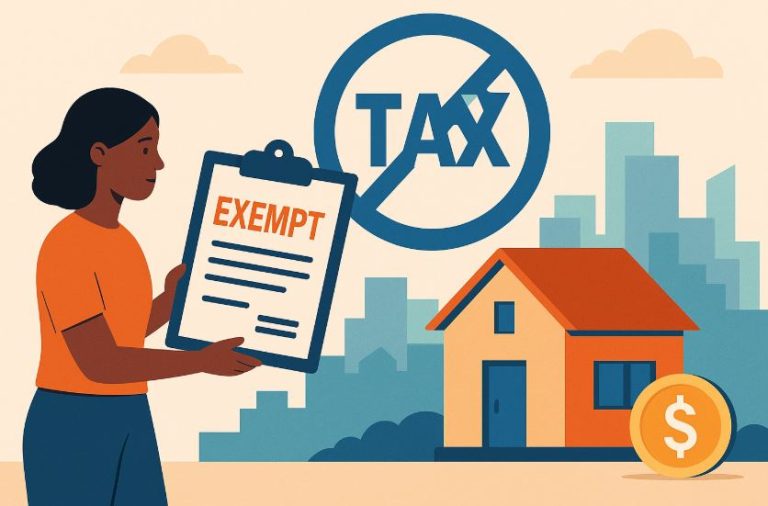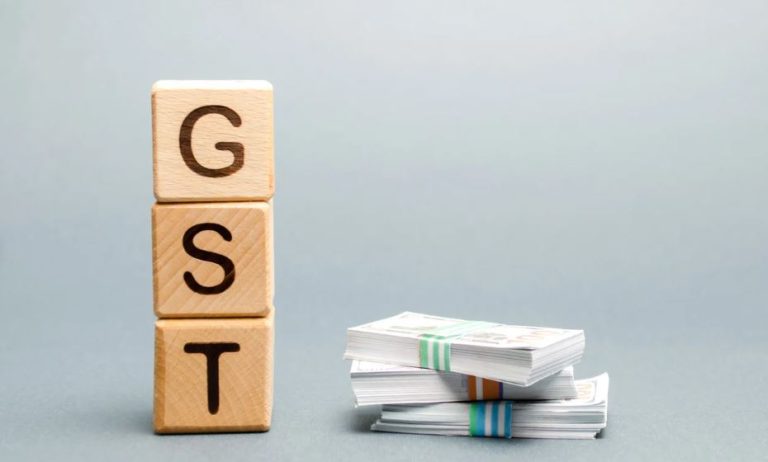Have you ever wondered why a portion of your salary or payment gets deducted even before it reaches your bank account? That’s the Tax Deducted at Source (TDS) at work.
As we enter FY 2025-26, understanding the latest TDS rates and their implications has become crucial not just for businesses, but for individuals too.
This blog will walk you through the TDS rate chart for FY 2025-26 (AY 2026-27), along with the new thresholds, exemptions, and the critical changes introduced in Budget 2025.
What Is the TDS FY 2025-26?
Tax Deducted at Source (TDS) is a system where the tax is collected at the very origin of income. The person responsible for making specific payments such as salary, rent, interest, or professional fees is required to deduct a certain percentage as tax before releasing the payment to the recipient.
This deducted tax must then be deposited with the central government, and the payer must issue a TDS certificate (Form 16 or Form 16A) to the payee. The recipient can claim this deducted amount as tax paid when filing their income tax return, reducing their overall tax liability.
The rate of TDS varies depending on:
- The nature of the payment
- The recipient’s category (individual, company, senior citizen)
- Whether PAN is available
- Residential status of the recipient
This structure ensures accountability and streamlines the tax collection process. Importantly, any non-compliance with TDS rules can lead to interest, penalty, and even disallowance of expenses.
What is the TDS Rate Chart for FY 2025-26 (AY 2026-27)?

The TDS rate chart outlines the percentage of tax to be deducted for various categories of payments. For FY 2025-26, most rates remain unchanged, but several threshold limits have been revised, and Section 194T has been newly introduced.
Key Highlights for FY 2025-26
- Threshold limits for many TDS sections have been increased, offering more breathing room for small transactions.
- A new Section 194T has been introduced for TDS on partner’s remuneration, applicable from April 1, 2026.
- Section 206AB, which mandated higher TDS rates for non-filers, has been removed to reduce compliance burden.
- The rate for Section 194LBC has been reduced to 10% for resident investors.
What Are the Changes in Threshold Limits?
Here’s a quick look at the key changes in TDS thresholds for FY 2025-26:
|
Section |
Nature of Payment |
Old Threshold |
New Threshold |
|
193 |
Interest on securities |
Nil |
₹10,000 |
|
194A |
Interest other than securities |
₹40,000 (₹50,000 for senior citizens) |
₹50,000 (₹1,00,000 for senior citizens) |
|
194 |
Dividend |
₹5,000 |
₹10,000 |
|
194K |
Mutual fund units |
₹5,000 |
₹10,000 |
|
194D |
Insurance commission |
₹15,000 |
₹20,000 |
|
194G |
Lottery commission |
₹15,000 |
₹20,000 |
|
194H |
Commission/Brokerage |
₹15,000 |
₹20,000 |
|
194I |
Rent |
₹2,40,000 |
₹6,00,000 |
|
194J |
Professional/Technical fees |
₹30,000 |
₹50,000 |
|
194LA |
Compensation for land acquisition |
₹2,50,000 |
₹5,00,000 |
What Are the TDS Rates for Residents?
|
Nature of Payment |
Threshold |
TDS Rate |
|
Salary |
Exemption limit |
Slab rates |
|
Interest |
₹50,000 |
10% |
|
Dividend |
₹10,000 |
10% |
|
Contract Payments |
₹30,000 (single) / ₹1 lakh (annual) |
1% |
|
Professional Services |
₹50,000 |
10% |
|
Technical Services |
₹50,000 |
2% |
|
Rent |
₹6,00,000 |
10% |
What Are the TDS on Salary and Retirement Payments?
Section 192 governs TDS on salaries and is based on the applicable income tax slab of the employee. There is no fixed rate; the employer must compute the total annual income of the employee and deduct TDS accordingly.
In case of premature withdrawal from the Employees Provident Fund (EPF), Section 192A applies. If the amount withdrawn exceeds ₹50,000, TDS at 10% is applicable.
This ensures early withdrawals from EPF are subject to taxation if not eligible for exemptions like five years of continuous service.
What Are the TDS on Interest and Dividend Income?
Interest payments, whether from banks, post offices, or financial institutions, attract TDS under various sections depending on the nature and the recipient.
Applicable Sections and Rates
|
Section |
Payment Type |
Threshold |
TDS Rate |
|
193 |
Interest on securities |
₹10,000 |
10% |
|
194A |
Bank/Post Office Deposits |
₹50,000 (₹1,00,000 for seniors) |
10% |
|
194 |
Dividends |
₹10,000 |
10% |
|
194K |
Mutual Fund Dividends |
₹10,000 |
10% |
TDS on dividends has become important again since the dividend income is now taxable in the hands of investors, and companies/mutual funds deduct TDS before paying it out.
What Are the TDS on Lottery, Gambling, and Game Show Winnings?
Winnings from lotteries, game shows, or horse races are taxed at a flat 30% rate regardless of the amount. Section 194BB applies to horse races, and Section 194BA has been added for online gaming platforms.
TDS is applicable even if the net amount received by the winner is less than the gross prize due to the tax already deducted at source.
What Are the TDS on Contractors, Agents, and Commission Payments?

For payments made to contractors or subcontractors, TDS applies under Section 194C. The rate differs based on the status of the recipient.
- 1% if the payee is an individual or HUF
- 2% if the payee is any other entity
Other key sections:
- 194D: Insurance Commission at 2% for individuals, 10% for others
- 194H: Brokerage or commission at 2%
- 194G: Lottery ticket commission at 2%
Threshold limit for each of these is now ₹20,000.
What is the TDS on Professional and Technical Services?
Section 194J handles professional service payments. Budget 2025 continues with two distinct rates under 194J:
- 2% for technical services, call centres, royalty for films
- 10% for other professional services like doctors, lawyers, architects
This bifurcation ensures that services with lower margins are taxed more fairly.
Threshold: ₹50,000 per financial year
What Are the TDS on Rent and Property Transactions?
Rent payments exceeding ₹6,00,000 annually attract TDS under Section 194I.
- 2% for plant and machinery
- 10% for land, building, and furniture
For individual or HUF tenants not covered under tax audit, Section 194IB applies if rent exceeds ₹50,000 per month at a rate of 2%.
Sale of immovable property attracts TDS under Section 194IA at 1% if consideration exceeds ₹50 lakh.
Other Notable TDS Sections
Section 194LA applies to compensation on compulsory acquisition of immovable property. If the amount exceeds ₹5,00,000, TDS at 10% is applicable.
Section 194N applies to cash withdrawals:
- 2% on withdrawals over ₹1 crore
- 5% on amounts exceeding ₹1 crore if ITR not filed for 3 years
Section 194O deals with e-commerce platforms. TDS of 0.1% is deducted on payments above ₹5 lakh made to participants. Section 194Q introduced TDS of 0.1% on purchases of goods exceeding ₹50 lakh. Section 194S is related to virtual digital assets like crypto. TDS is 1% on transfer consideration exceeding ₹10,000 (₹50,000 for specified persons).
Section 194T: TDS on Partner’s Remuneration
From April 1, 2026, Section 194T mandates a 10% TDS on the payment of remuneration, salary, interest, or commission made by a partnership firm to its partners if such payment exceeds ₹20,000 in a financial year.
This move aims to plug tax leakages and brings transparency in intra-firm transactions.
What Are the TDS Rates for Non-Residents (NRI and Foreign Companies)?

For non-residents, there is no threshold limit for TDS applicability, and the rate is often higher due to added surcharge and cess.
Popular Sections and Rates
|
Nature of Income |
Section |
TDS Rate |
|
Royalty |
195 |
20% |
|
Dividend |
195 |
10% |
|
Technical Fees |
195 |
20% |
|
Lottery/Game Winnings |
194B |
30% |
|
Interest on bonds |
194LD |
5% |
|
Offshore Fund Income |
196B |
10% |
|
Income from GDRs |
196C |
10% |
An additional 4% health and education cess is applicable over these rates. For foreign companies, TDS rates can go as high as 40% on income distributed by investment funds and business trusts.
TDS Comparison: Residents vs Non-Residents
|
Payment Type |
Residents TDS |
Non-Residents TDS |
|
Dividend |
10% |
10% |
|
Interest |
10% |
20% |
|
Professional Fees |
10% |
20% |
|
Lottery Winnings |
30% |
30% |
|
Technical Services |
2% or 10% |
20% |
TDS Compliance and Penalties
Proper TDS compliance is mandatory for businesses and individuals making large payments. Late deduction, non-deduction, or delay in depositing the TDS with the government can lead to:
- Interest on late deposit (1% or 1.5% per month)
- Penalty under Section 271C
- Disallowance of expense under Section 40(a)(ia)
Filing TDS returns on time and issuing TDS certificates to payees are also mandatory to avoid scrutiny and ensure smooth refunds.
Conclusion
Staying updated with the TDS rates for FY 2025-26 is not just a compliance need but a strategic move for efficient tax planning.
With raised thresholds, simplified processes, and new sections like 194T, the government aims to streamline the tax deduction process while reducing the burden on small taxpayers.
By understanding the nature of payments and applying the right TDS rate, both individuals and businesses can stay compliant and avoid unexpected tax notices or penalties. It’s not just about paying tax; it’s about paying it smartly and timely.
Frequently Asked Questions (FAQs)
Is TDS applicable if the transaction amount is below the threshold limit?
TDS is not required if the payment does not exceed the specified threshold limit under that section for the financial year.
What happens if PAN is not provided by the recipient?
If PAN is not available, TDS must be deducted at a higher rate of 20% or the applicable rate, whichever is higher.
Can individuals deduct TDS on rent payments?
Yes, if an individual or HUF pays monthly rent exceeding ₹50,000, they must deduct TDS under Section 194IB.
Is TDS applicable to freelancers or consultants?
Yes, professional fees paid to freelancers are subject to 10% TDS under Section 194J if the total payment exceeds ₹50,000 in a year.
What is the due date to deposit TDS with the government?
TDS must be deposited by the 7th of the next month. For March deductions, the deadline is April 30th.
How is TDS reflected in the payee’s income tax return?
The deducted TDS is shown in Form 26AS and can be claimed as a tax credit while filing the income tax return.
Does TDS apply on cash withdrawals from banks?
Yes, under Section 194N, if cash withdrawal exceeds ₹1 crore in a year, TDS is applicable at 2%, with higher rates if ITR is not filed.




